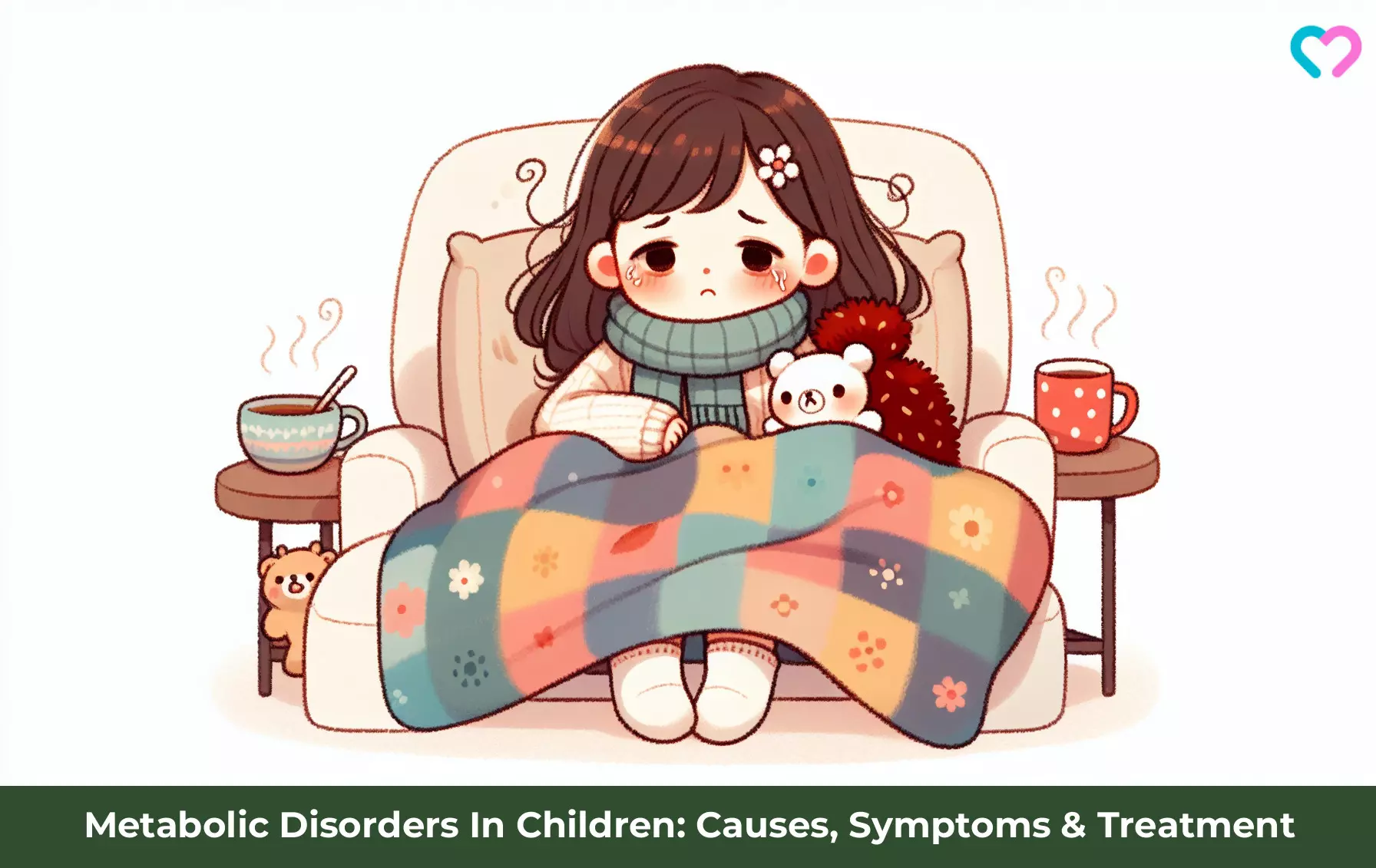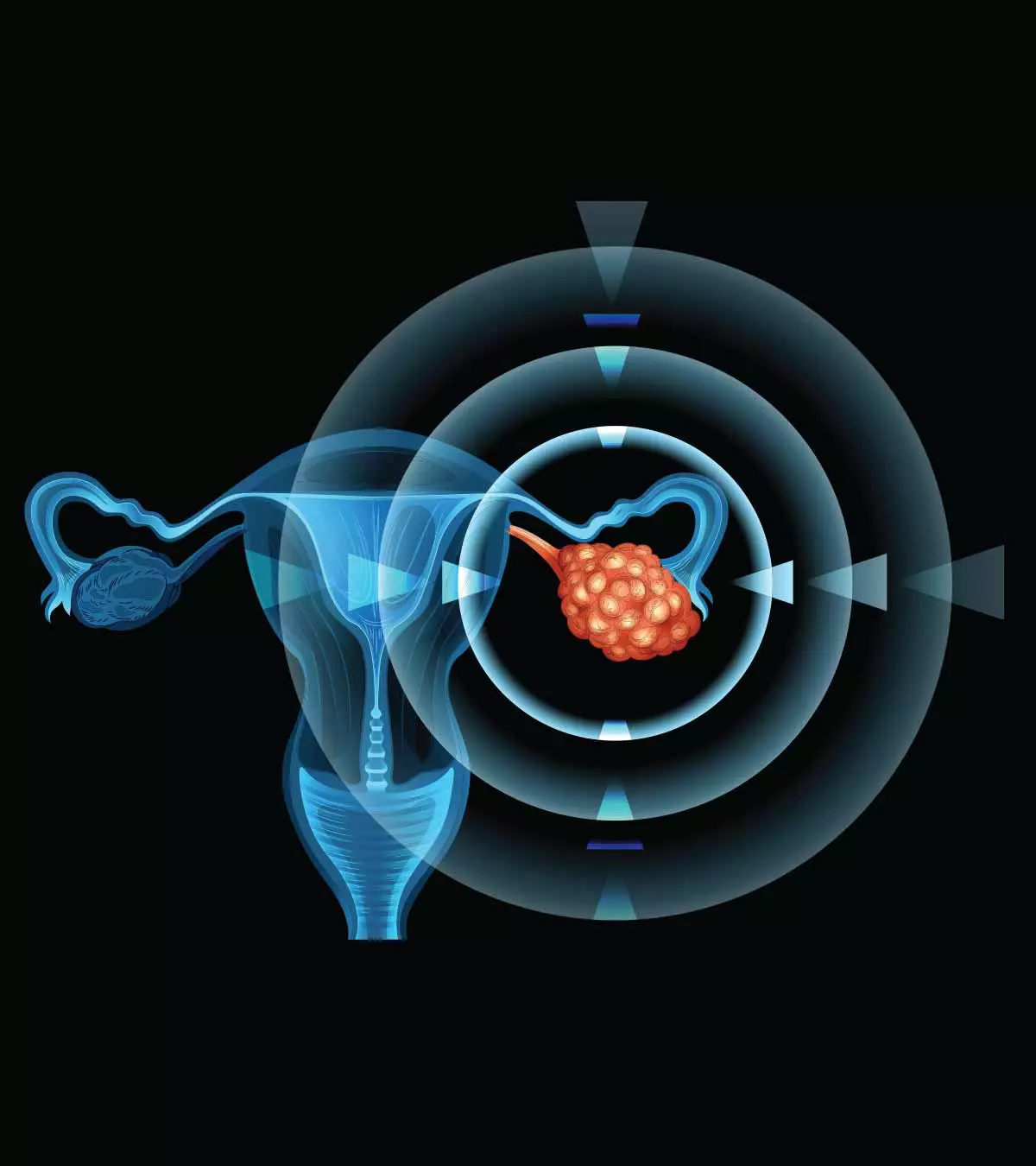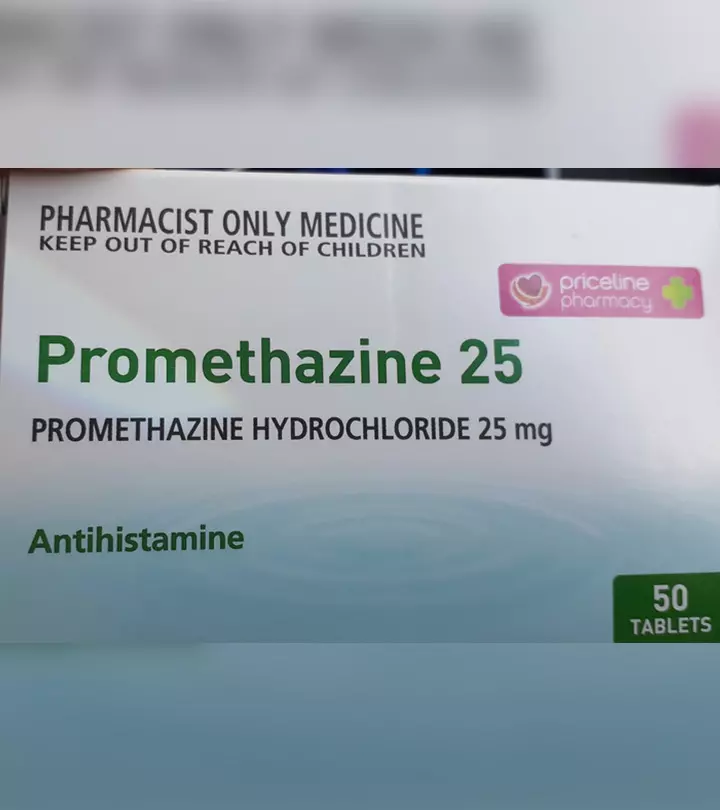
Image: ShutterStock
Most metabolic disorders in children can be due to inherited gene abnormalities (mutations or defects). However, a few can be acquired triggered by environmental and lifestyle factors such as childhood obesity. These conditions can alter normal physiological processes in the body due to defects in enzymes stimulating the process or the inability to use certain nutrients.

Read on to learn more about the causes, types, symptoms, and management of metabolic disorders in children and ways to cope with most of these inborn errors.
Key Pointers
- Metabolic disorders are caused by defective genes that lead to the accumulation of complex substances, malabsorption, or inability to synthesize building blocks.
- In children, metabolic disorders mainly occur due to inheritance of defective genes from parents.
- Over 50 types of metabolic disorders have been identified in children, and some cases can be triggered by childhood obesity.
- Symptoms of metabolic disorders may include poor eating habits, failure to meet growth milestones, mental retardation, jaundice, and lethargy.
- Treatment options for metabolic disorders include enzymatic medications and elimination of specific food groups.
What Is A Metabolic Disorder?
In the case of a metabolic disorder, the defective genes might not be able to produce these enzymes or would produce them in fewer quantities.
This could cause disturbances in metabolism and lead to:
- A buildup of complex substances in the body, which could turn toxic.
- Inability to absorb essential nutrients into the body.
- Inability to synthesize building blocks of the body, such as carbohydrates, proteins, and fats to release energy.
About one newborn in every 2,500 live births has been shown to have a type of metabolic disorder (17). Therefore, it is important to identify the early symptoms of various metabolic disorders to ensure your child’s growth and development.
Causes Of Metabolic Disorders In Children

The main cause of most metabolic disorders in children is the inheritance of defective genes from the parents. These defective genes are due to mutations that might have occurred many years ago and are being passed down to generations.
The human body produces enzymes based on the information stored in several pairs of genes. Children usually get these genes from both the parents, and the child might receive one normal gene and one defective gene. The normal gene would function for the defective gene, and so, no symptoms of the disorder could be found in that child. However, that child could become the carrier and might pass on the defective gene to the next generation.
If the child inherits both the defective genes, then, their body would not be able to produce that particular enzyme, causing a metabolic disorder (1).
Sometimes, metabolic disorders could also occur due to environmental and lifestyle factors such as obesity.
Types Of Metabolic Disorders Found In Children
There are over 50 metabolic disorders identified in children; these disorders are due to defects in genes that are inherited from the parents. Here are a few details about a few such disorders.
| S.No | Name of the disorder | What is it? |
|---|---|---|
| 1. | Galactosemia | Caused due to deficiency of galactose-1-phosphate uridylyltransferase (GALT), which is necessary for the metabolism of galactose, resulting in a build-up of sugars in the body. This is usually detected during newborn screening (2). |
| 2. | Glycogen storage disorders | In this condition, the body will not be able to metabolize the stored glycogen to supply energy and maintain steady blood glucose levels in the body. The children might have doll-like faces with fat cheeks, short stature, and bulging abdomen (3). |
| 3. | Hereditary Fructose intolerance | The affected child would not be able to digest fructose or its metabolites (sugar, sorbitol, and brown sugar) due to deficiency of fructose-1-phosphate aldolase. This makes the children intolerant to fructose and accumulation of that sugar in the liver and kidneys (4). |
| 4. | Pyruvate metabolism disorders | This can occur during infancy or could be developed later in life. In this condition, the body will not be able to metabolize pyruvate, which is a metabolite of glucose and helps in producing energy (5). |
| 5. | Homocystinuria | This is characterized by the presence of excess homocysteine, which is a type of amino acid used in the synthesis of proteins. This usually occurs due to the reduced activity of cystathionine beta-synthase enzyme (6). As these amino acids are used for the synthesis of proteins, the child might fail to attain the ideal height and weight. |
| 6. | Maple syrup urine disease | This metabolic disorder is characterized by urine and ear wax having a distinct odor resembling that of maple syrup. This is due to the body’s inability to produce certain enzymes required to break a type of amino acids. The signs of this disorder arise within a few hours of birth (7). |
| 7. | Phenylketonuria | This metabolic disorder could be identified during newborn screening. In this condition, the baby lacks the enzyme phenylalanine hydroxylase that is necessary to synthesize the amino acid phenylalanine. As a result, you may notice a musty urine smell and body odor in children, caused due to the accumulation of phenylalanine, besides other symptoms (8). |
| 8. | Tyrosinemia | This condition causes accumulation of the amino acid tyrosine due to the body’s inability to produce fumarylacetoacetate hydrolase, which is needed for the final breakdown of tyrosine (9). Symptoms vary from one person to another and may include failure to gain weight and grow as expected. |
| 9. | Mucopolysaccharidoses (Lysosomal storage disorders) | This is a type of lysosomal storage disorder, where the lysosomes in the cells (present in the cartilage, tendons, corneas, and skin) lack the enzymes to break long-chain sugar carbohydrates. It has subtypes based on the enzyme that is lacking- MPS-I, MPS-II, and MSP-III, which are again subdivided based on the severity (10). Long-term effects of this disorder may affect the child’s appearance, physical abilities, organ development, and sometimes mental development. |
| 10. | Mitochondrial disorders | These disorders occur due to the defects in the mitochondria of the cells in the body. As these mitochondria are known as powerhouses of the body, it could lead to developmental delays. Various syndromes that fall under this category are – Barth syndrome, chronic progressive external ophthalmoplegia, Kearns-sayre syndrome, Leigh syndrome, Mitochondrial DNA depletion syndrome, lactic acidosis, and Pearsons syndrome (11). |
| 11. | Menkes disease | This is a degenerative disorder of the body’s copper metabolism, which causes a deficiency of copper in the cells of the body, leading to retardation and stunted growth (12). |
| 12. | Sickle cell disease | This disorder is caused due to the mutations in the gene related to hemoglobin. The red blood cells of the body have thickened walls, giving it a sickle shape, and have a shorter life than normal cells, causing anemia and repeated infections (13). |
Some other metabolic disorders that children can have include urea cycle disorders, organic acidemias, amino acid disorders, fatty acid oxidation disorders, and congenital disorders of glycosylation.
Although most metabolic disorders are due to defective genes inherited by the child, childhood obesity could also be a triggering factor in some cases.
Metabolic syndrome: This syndrome is a cluster of risk factors such as high blood pressure, cardiovascular risks, thyroid disorders, adrenal disorders such as Addison disease, and insulin resistance. If a child has insulin resistance, they are at risk of other health issues, such as hypoglycemia and hyperglycemia (types-2 diabetes). According to the data derived from the study conducted by The Lancet, child and adolescent health on 5,50,405 children and adolescents from 44 countries in 13 regions, the global prevalence of metabolic syndrome in 2025 was seen in 2·8% or approximately 25·8 million children and in 4·8% or approximately 35·5 million adolescents living with metabolic syndrome.
A recent study aimed at classifying inborn errors of metabolism (IEMs) reported 1015 known IEMs. Some of these IEMs were found to be more prevalent, as shown in the chart below. The data suggests that mitochondrial disorders (23%) have the highest occurrence rate, followed by nitrogen-containing compound disorders (19%) and disorders of glycosylation (12%).

Percentage of each category of inborn of metabolism
Source: Inborn Errors of Metabolism in the Era of Untargeted Metabolomics and Lipidomics; Metabolites
Symptoms Of Metabolic Disorders In Children
The symptoms could be specific to the type of metabolism being affected. However, there are a few common symptoms that might help you identify if your child is suffering from a metabolic disorder.
- Poor feeding

- Not able to meet the growth milestones
- Abnormal urine, sweat, or saliva
- Mental retardation
- Abnormal body features (bulging abdomen, depressed nasal bridge)
- Jaundice
- Kidney stones/ liver toxicity
- Seizures
- Failure to gain weight and height
- Weakness
- lethargy
- Confusion
- Abdominal pain and vomiting after consuming certain foods
- Eye problems – loss of vision , retinitis pigmentosa , optic atrophy , cherry red spot
- Extrapyramidal disorders
- Pyramidal and cerebellar syndrome with or without peripheral neuropathy (white matter disease)
- Joint and muscular disorders
- Myopathy
 Point to consider
Point to considerDiagnosis Of Metabolic Disorders

Most of these metabolic disorders are diagnosed during newborn screening or before birth. Many states in the US have made it mandatory to screen babies for some of these disorders (15). The test involves pricking the baby’s heel to collect the blood sample, which then goes for laboratory testing.
If any of the disorders are not diagnosed during the newborn screening, then they are not identified until the symptoms appear. Usually, your child’s doctor would perform a physical examination and run blood and urine tests and DNA tests to determine the exact metabolic disorder.
Treatment For Metabolic Disorders In Children

As these disorders are due to defects in the genes, they cannot be completely cured with the treatment options available now. However, by taking certain measures, these disorders could be managed to a certain extent.
It should be remembered that your doctor is the best person to identify and prescribe the diet and precautions that would help your child to have a healthy childhood.
Your doctor might prescribe the following:
- Eliminating the food groups which the body is not able to process.
- Give artificial enzymes through medication in place of the inactive/ absent enzyme, which might promote proper metabolism.
- Give medications to remove the toxic products that get accumulated in the body due to failed metabolism.
Some of these disorders can cause serious complications and permanent organ damage in children, so early identification and intervention of metabolic disorders might help effective management.
 Quick fact
Quick factFrequently Asked Questions
1. What are the five signs of metabolic syndrome?
The five major risk factors or signs of metabolic syndrome are a larger waistline, high blood pressure, high triglyceride levels, low HDL cholesterol, and high fasting glycemia. Any three of these risk factors may indicate metabolic syndrome (16).
2. How do I test for metabolic disorders?
A prenatal screening test called amniocentesis, genetic testing, and metabolic testing for amino acid, fat, and glucose metabolism patterns are part of the laboratory testing for metabolic disorders (17). The doctor will also suggest blood tests to determine triglyceride, HDL cholesterol, and glucose levels to detect the presence of any metabolic disorders (16).
3. What are rare metabolic disorders?
Metabolic disorders inherited from birth usually represent a broad class of severe inherited diseases caused by rare genetic mutations. Some of these rare inherited metabolic disorders include Hurler syndrome, glycogen storage diseases, and metal metabolism disorders (such as Wilson disease) (17) (18).
4. How can I support my child with a metabolic disorder?
If your child has a metabolic disorder, they will need ongoing care. Regularly monitor the condition with routine blood tests, follow up with appointment schedules, and make specific lifestyle changes, including diet and exercise plans (20).
Metabolic disorders in children mostly manifest due to the inheritance of defective genes from the parents. However, they can be treated up to a certain extent with the help of medical intervention. Take proper care of your child and ensure that they lead a healthy lifestyle. Taking care of your child suffering from such a disorder might be quite challenging and tricky. Therefore, strictly following the doctor’s advice and taking medications as suggested by them will help you deal with these disorders in your child.
Infographic: What Are The Signs Of Metabolic Disorders In Children?
While some defective genes are mostly responsible for metabolic disorders in children, several other factors, including obesity, could also be the cause. The infographic below includes some indicators that suggest these disorders in children. Knowing these signs will ensure early detection and intervention.
Some thing wrong with infographic shortcode. please verify shortcode syntaxIllustration: Metabolic Disorders In Children: Causes Symptoms & Treatment

Image: Stable Diffusion/MomJunction Design Team
Learn about the diagnosis and management of metabolic syndrome in children. Get the latest information from experts in the field to help your child manage these conditions.
References
1. Genetics Basics; Centers for Disease Control and Prevention
2. Galactosemia; Genetic and Rare Disease Information Center; National Center for Advancing Translational Sciences
3. Glycogen Storage Disease Type I; National Organization for Rare Disorders
4. Fructose Intolerance, Hereditary; National Organization for Rare Disorders
5. Pyruvate Dehydrogenase Complex Deficiency; National Organization for Rare Disorders
6. Homocystinuria due to Cystathionine Beta-Synthase Deficiency; National Organization for Rare Disorders
7. Maple Syrup Urine Disease; National Organization for Rare Disorders
8. Phenylketonuria; National Organization for Rare Disorders
9. Tyrosinemia Type 1; National Organization for Rare Disorders
10. Mucopolysaccharidoses Fact Sheet; Genetic and Rare Disease Information Center; National Center for Advancing Translational Sciences
11. Mitochondrial Myopathy Fact Sheet; Genetic and Rare Disease Information Center; National Center for Advancing Translational Sciences
12. Menkes Disease; National Organization for Rare Disorders
13. Sickle cell disease; Genetics Home Reference; US National Library of Medicine
14. Ram Weiss, Andrew A Bremer, and Robert H Lustig; What is metabolic syndrome, and why are children getting it?; NCBI
15. Recommended Uniform Screening Panel; Federal Advisory Committees; US Health Resources & Services Administration
16. V Soska; Laboratory markers of metabolic syndrome in clinical practice; NCBI
17. Inborn Errors of Metabolism (IEM); Cleveland Clinic
18. Teresa Pampols; Inherited metabolic rare disease; NCBI
19. Metabolic Disorders; Riley Hospital for Children
20. Metabolic Syndrome; Cleveland Clinic
Community Experiences
Join the conversation and become a part of our nurturing community! Share your stories, experiences, and insights to connect with fellow parents.
Read full bio of Dr. Surabhi Gupta
Read full bio of Dr Bisny T. Joseph
Read full bio of Swati Patwal
Read full bio of Anindita Ghatak


















